Bob Mayer's Blog, page 65
December 9, 2018
The Secret Life of the Zoo

My wife finds the most interesting things to watch and this one is our latest favorite. She always has the remote and she always finds shows that are off the beaten path.
It’s on The Animal Planet channel and about the Chester Zoo,the most popular zoo in the UK. The zoo has over 21,000 animals and there are700 people who work there. Each episode covers several animals and is interspersed with quick comments from the keepers.
You can obviously see the passion of the workers for the animals. You also see the joy and sadness of their job. The zoo has many endangered species and one of the keys is the cycle of life and death, particularly birth(watch the one where the giraffe gives birth).
Cool Gus definitely gives this four paws up for entertainment,
learning and overall a feel-good show.
December 7, 2018
The Mistakes on Both Sides that led to Pearl Harbor
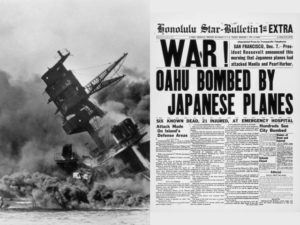 Abridged from Stuff Doesn’t Just Happen: The Gift of Failure.
Abridged from Stuff Doesn’t Just Happen: The Gift of Failure.
I go through the seven Cascade Events that led to Pearl Harbor in detail in the book, but here they are listed:
Political misunderstanding and maneuvers that backfired. Both sides misunderstood the objectives of the other.
Military strategic planners in both countries seriously miscalculated each other. The Japanese over-estimated the United States’ Plan Orange. The United States under-estimated the Japanese potential for attack.
Warnings were ignored and/or not given to those who needed to get the warnings.
Tactical considerations worked both ways. The Japanese focused on destroying battleships while using their aircraft carriers which showed a serious blind spot in their tactics. Ultimately the war in the Pacific was a carrier war. The Americans though Pearl Harbor was too shallow for effective torpedo attack by plane.
New technology was not used correctly. The United States failed to properly utilize radar.
Timing is everything.
At 7:48 am on December 7th, 1941, the Japanese Empire conducted a surprise assault on the island of Oahu, primarily focused on the American Pacific Fleet in the harbor, with a secondary objective of destroying military aircraft at outlying bases.
The final tally was:
Navy: 2,009 KIA; 710 wounded.
Army: 218 KIA; 364 wounded.
Marines: 109 KIA; 69 wounded.
Civilians: 68 killed; 35 wounded.
Aircraft:
Navy: 92 destroyed; 31 damaged.
Army Air Corps (there was no separate Air Force branch at the time): 77 destroyed; 128 damaged.
Ships:
Battleships: 2 destroyed; 6 damaged.
Cruisers: 0 destroyed; 3 damaged.
Destroyers: 0 destroyed, 3 damaged.
Auxiliaries: 1 destroyed, 4 damaged.
The United States came back from the devastation of the Pearl Harbor attack even faster than Admiral Yamamoto had feared. At the Battle of the Coral Sea, 7-8 May 1942, the Navy stopped the Japanese from advancing (although the Lexington was sunk). On at the Battle of Midway, 4-7 June 1942, the U.S. Navy delivered a devastating blow, sinking four Japanese carriers and turning the tide of the war.
December 4, 2018
A Tweet Actually Changed My Actions and Perhaps Saved My Life
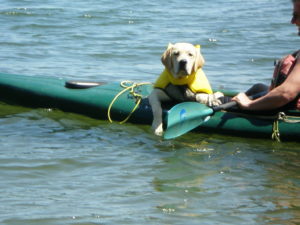 I admit I tend to believe social media is mostly sound and fury signifying nothing and that no one changes their mind or their actions based on it. However, several months ago I saw a tweet where someone wrote that two friends had drowned over the weekend in an accident and they would have survived if they’d been wearing their life jackets. That made me stop and ponder.
I admit I tend to believe social media is mostly sound and fury signifying nothing and that no one changes their mind or their actions based on it. However, several months ago I saw a tweet where someone wrote that two friends had drowned over the weekend in an accident and they would have survived if they’d been wearing their life jackets. That made me stop and ponder.
I kayak a couple of times a week. While not required, I’ve always carried a life jacket anyway, stuffed behind the seat. After all, even if full of water, the kayak itself still floats; as Cool Gus proved in Puget Sound some years ago shortly after this photo was taken.
But that tweet made me think deeper about the issue. I compared it to seat belts in cars. We’re required to wear them, not just have a car equipped with them. What are we going to do? See the accident coming and quickly buckle up?
When would I need a life jacket? In case of an accident. But the very nature of the word ‘accident’ means it would be an unexpected situation. What good was the life jacket behind my seat going to do in that situation? Then I started thinking about various situations, aka, accidents. What if I got hit by a boat and knocked overboard unconscious? How much good would the jacket or even the still floating kayak do me?
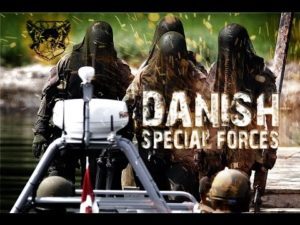 I’ve graduated the Royal Danish Navy’s Fromandkorpset Combat Swim School, which is a nice way of saying I was very cold in the North Sea for several weeks and swam very long distances learning the fundamental rule that dry suits aren’t. But they also had one of their elite soldiers, the equivalent of Navy SEALs, drown during a mission while we were working with them because he was knocked unconscious by the concussion of an explosion.
I’ve graduated the Royal Danish Navy’s Fromandkorpset Combat Swim School, which is a nice way of saying I was very cold in the North Sea for several weeks and swam very long distances learning the fundamental rule that dry suits aren’t. But they also had one of their elite soldiers, the equivalent of Navy SEALs, drown during a mission while we were working with them because he was knocked unconscious by the concussion of an explosion.
The more I thought about various scenarios, much like we used to “war game” our missions in Special Forces during Isolation prior to deployment, the more I realized that not wearing the jacket was akin to driving without my seatbelt buckled.
From that day forward, even on the calmest times on the water, I started wearing the vest. The first thing I realized was that I didn’t have it adjusted correctly. So I had to do that and it would have been too late if I needed it in an emergency.
Then I thought about some other things. In Combat Swim school and during training and missions on my A-Team, which was maritime operations designated, we wore certain safety gear. A strobe light on our arm. So I also added a waterproof strobe into a pocket on the life vest. Along with an emergency whistle and a waterproof Quikclot bandage (I’m a big fan of having one of these with me on any outdoor adventure such as kayaking and biking). And then I remembered the last time I flipped in deep water, thank you Cool Gus, in Puget Sound (picture above) and how very hard it is to move a water filled kayak. So I added swim fins to better be able to pull the kayak if I was far from shore and a hand pump.
 Why was all this important? Normally I kayak on the placid TN River. But the other week I was kayaking down the much more turbulent Little River out of the Smoky Mountains. I hit a submerged rock a glancing blow and the kayak went over in swift and deep water. It took getting swept along quite a ways in rocky, white water, to be able to swim the water-logged kayak to shore. If I had not had my life vest on, the situation could have been even more perilous. Also, if I’d been hurt, I was in a ravine where I couldn’t be seen from the higher shoreline. No one would have known I was there, so the whistle could have come in handy.
Why was all this important? Normally I kayak on the placid TN River. But the other week I was kayaking down the much more turbulent Little River out of the Smoky Mountains. I hit a submerged rock a glancing blow and the kayak went over in swift and deep water. It took getting swept along quite a ways in rocky, white water, to be able to swim the water-logged kayak to shore. If I had not had my life vest on, the situation could have been even more perilous. Also, if I’d been hurt, I was in a ravine where I couldn’t be seen from the higher shoreline. No one would have known I was there, so the whistle could have come in handy.
Additionally, I have a tether for the paddle. That was fortunate because, at the very least, I would have lost my paddle. And there were a couple of times, as I was being battered and swept down river next to the kayak that I lost my grip on the kayak but still had hold of the paddle and the only thing that kept us connected was that tether. It’s a lot stronger than it looks. Here is an image of my kayak and the various gear including paddle, tether, life jacket, pump, waterproof container (with tether for my iPhone), water proof container with locking snap link for my wallet and keys. BTW– those waterproof containers worked and were important.
Bottom line, I managed to get to some rocks near the edge of the ravine. Filled with water, I couldn’t turn the kayak over or lift it out. So I spent a long time, waist deep in cold water, pumping it out before being able to lift it out to drain.
Via one tweet on social media I went through the three stages of change as I teach in my writing and prep/survival classes:
Moment of enlightenment—two people died because they didn’t wear their life vests; I don’t wear mine.
Make a decision—wear mine.
Sustained action—always wear it.
This is why I tweet and post a lot of prep/survival stuff and have free slideshows for download. Because I can learn new things and pass on what I learn. Has anything you’ve encountered on social media changed an action for you?
November 9, 2018
Alpha– how did wolves evolve into dogs?
 Dogs have a very unique role, not just as pets, but in the way they integrated themselves into human society long ago. They are descended from wolves, but are now rather different. But what happened? How did this genetic break begin and evolve?
Dogs have a very unique role, not just as pets, but in the way they integrated themselves into human society long ago. They are descended from wolves, but are now rather different. But what happened? How did this genetic break begin and evolve?
The movie Alpha posits an interesting scenario. One that is believable, especially the fact that the human had to be different, not just the wolf, for those initial connections between two predators to take place. I constantly remind Cool Gus he is a predator and he reminds me to get his food bowl.
 Some of the action was a bit over the top, particularly the fall and just a broken ankle– I could almost hear ribs shatter– but hey, poetic license. The photography was superb and I could well imagine an IMAX viewing would be spectacular. We kept wondering where it had been shot, initially positing Iceland. However, it was filmed in East Coulee and Dinosaur National Park near Alberta, Canada. Spectacular. The visuals alone are worth watching it.
Some of the action was a bit over the top, particularly the fall and just a broken ankle– I could almost hear ribs shatter– but hey, poetic license. The photography was superb and I could well imagine an IMAX viewing would be spectacular. We kept wondering where it had been shot, initially positing Iceland. However, it was filmed in East Coulee and Dinosaur National Park near Alberta, Canada. Spectacular. The visuals alone are worth watching it.
Cool Gus gave it a very enthusiastic four paws up!
And yes, I know the links and pop ups on my web site are messed up. Apparently the plug in I had have evolved into a different version and I’m working on it!
October 26, 2018
A Brief History of the Salem Witch Trials– when paranoia, greed and fear ruled
Given the modern political climate it’s worth revisiting an event where paranoia and group reaction overwhelmed common sense and common decency. Greed combined with fear is a dangerous combination as the greedy can easily manipulate the fearful for their own means.
Also, we’re coming up on Halloween. Just saying.
A Brief History of the Salem Witch Trials from Cool Gus Publishing
October 24, 2018
Writer Wednesday Introduction and Nanowrimo Tips
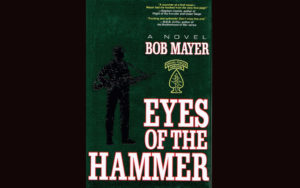 November is Nanowrimo and this is a good time to initiate my Writer Wednesday blog. I’ve been writing for 30 years. My first manuscript penned was in 1988 and my first published book was 1991. It took a few years to get an agent and publisher and my first manuscript wasn’t my first published book—there’s a learning curve. To the right is the hardcover cover of my very first book.
November is Nanowrimo and this is a good time to initiate my Writer Wednesday blog. I’ve been writing for 30 years. My first manuscript penned was in 1988 and my first published book was 1991. It took a few years to get an agent and publisher and my first manuscript wasn’t my first published book—there’s a learning curve. To the right is the hardcover cover of my very first book.
I’m over 75 books down the line. Over 40 traditionally published and hitting all the traditional bestseller lists : NY Times, Wall Street Journal, USA Today, Publishers Weekly, etc. I have over 25 books indie published and even ran my own publishing house for a while which was a great learning experience. I also have five books published by 47North, Amazon Publishing science fiction imprint. And nine books with Amazon Encore as I was in on eBooks at the beginning. So my experience in the business is varied.
My experience in writing is also varied. I’ve written in numerous genres including military thriller, science fiction, romance, historical fiction, non-fiction, suspense, etc. I’ve constantly tried new things creatively and in the business. My latest manuscript, New York Minute, is my best, using all I’ve learned in three decades.
Thus, every Wednesday I will do a post on writing utilizing not only my experience but what I’ve learned from many other writers I’ve known over the years.
Below is a newly updated slideshow for Nanowrimo giving some tips and information. I look forward to sharing with you every week.
Preparing For Nanowrimo Success from Cool Gus Publishing
October 22, 2018
Survival Monday: Introduction
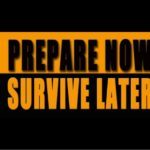 Every Monday I will be posting on Survival topics. We’ll begin with an introduction then cover how to be prepared, which is what we must do now.
Every Monday I will be posting on Survival topics. We’ll begin with an introduction then cover how to be prepared, which is what we must do now.
Introduction You Can Do It!
Get two cases of water bottles for each person in your household.
You have just taken the most important step in preparation for an emergency or natural disaster: an adequate supply of water for at least six days for each person.
These posts are designed for you. The person who has concerns about whether they are adequately prepared for emergencies and disasters. They are written to help you easily prepare for and deal with a wide array of possible situations in a common-sense, step by step manner.
We are constantly being bombarded with images of people caught in both natural and unnatural emergencies and disasters. They appear on our television screen and we watch the devastation, confusion and chaos with a combination of relief and fear. Relief because it’s not us and fear because even though we bury the emotion, telling ourselves that won’t happen to us, we know deep down that accidents, disasters and emergencies do not discriminate and can strike anyone, anywhere at anytime. You, and someone you love, will definitely face at least one of the topics covered in this book.
The key is to be prepared and these posts will show you how to do it. They will give you step-by-step checklists that you can readily follow in order to be ready. It also allows you to prepare by levels, from mild to moderate to extreme.
The posts will be structured as follows:
First: The key phrase to remember: SURVIVAL.
Second: The five key elements for survival
Third: The Area Study & emergency and threat assessment
Fourth: the four places for which to plan
Fifth: The Grab-n-Go bags you need
Sixth: Specific environments and events for which to prepare
Appendixes: All checklists. All items mentioned with links. Links to APPs and web pages.
Between those topics and the sub-topics in each, along with all the checklists, you will be ready for any emergency and survival situation.
Why do you need these posts?
80% of Americans live in a county that has been hit by a weather related disaster since 2007
60% of people have not practiced or prepared for what to do in an emergency
55% of people think they can rely on the “authorities” to rescue them
44% of people have no first aid kit
48% of people have no emergency supplies
53% of people do not have a three days supply of water
52% of families do not have an emergency rally point (ERP)
42% of people do not know the phone numbers of immediate family members
In the Green Berets, the most important thing that made us elite was our planning. We not only thoroughly planned our missions, we also Emergency Planned all the possible things we could imagine going wrong.
You Emergency Plan for 3 reasons:
To avoid the emergency.
To have a plan, equipment, training etc. in place in case the emergency strikes.
To give you peace of mind in day-to-day living so you don’t constantly have to worry about potential emergencies because you are prepared for them. This allows you to experience a higher quality of life.
Three Levels of Emergencies.
I’m going to define three types of survival situations/emergencies and will use these definitions throughout these posts. They are also the order of what is most likely to happen. Your immediate goal should be to be prepared for a mild emergency.
Mild: You experience some discomfort from your normal routine for no more than 48 hours, but it is not life threatening. Example: Your power goes off for a day or two.
Moderate: You experience a large change from your normal routine, either natural or man-made, which is not immediately life threatening but has the potential to become so if not dealt with, and/or it continues. Example: Your power goes off for five days or more. Your car slides off the road in a remote area and you are trapped inside. A powerful hurricane is approaching. A 5.0 or greater earthquake strikes.
Extreme: A catastrophic natural or man-made event that immediately threatens your life and the lives of all around you, and if it continues, will be a constant threat. Example: A tsunami hits your coastal town. A tornado destroys your home. Nuclear, biological and chemical warfare/terrorist attack. A 7.0 or greater earthquake. The collapse of civilization. A pandemic with a high transmission and kill rate. Assume the worst until the situation stabilizes.
Three levels of Emergencies
Mild
Moderate
Extreme
Why Prepare Now? Because it's too late once something happens from Cool Gus Publishing
October 18, 2018
When Fiction Is Ahead of Reality-What Can Stop an Imperial Presidency?
The Historical Facts:
In May of 1783, the Society of the Cincinnati was founded. A leading member was Alexander Hamilton, and the first President of the Society was George Washington, even before he was President of the United States. The Society of the Cincinnati is the oldest, continuous military society in North America. Its current headquarters is at the Anderson House in downtown Washington, DC. Besides the Society of the Cincinnati, Hamilton founded the Federalist Party, the first political party.
“Can a democratic assembly . . . be supposed steadily to pursue the public good? Nothing but a permanent body can check the imprudence of democracy. Their turbulent and changing disposition requires checks.” Alexander Hamilton. 1787.
Thomas Jefferson was not allowed membership in the Society of the Cincinnati.
“Your people, sir, are a great beast.” Alexander Hamilton. 1792.
In 1802, President Thomas Jefferson, well known for his strong opposition to a standing army, established the United State Military Academy, the oldest Military Academy in the Americas. In 1819, he founded the University of Virginia, the first college in the United States to separate religion from education.
In 1745, the American Philosophical Society (APS), the oldest learned society in North America was founded. Thomas Jefferson was a member for 47 years and its President for 17 years. He subsequently established the adjunct United States Military Philosophical Society (MPS) at West Point with the Academy Superintendent as its first leader. The APS has its current headquarters in Philosophical Hall on Liberty Square in Philadelphia. The MPS appears to have disappeared.
“I am not among those who fear the people. They, and not the rich, are our dependence for continued freedom.” Thomas Jefferson. 1816.
Besides the APS and MPS, Jefferson founded the Anti-Federalist Party.
“The mass of mankind has not been born with saddles on their backs, not a favored few booted and spurred, ready to ride them legitimately, by the Grace of God.” Thomas Jefferson. 1826.
I wrote The Jefferson Allegiance on the premise that Thomas Jefferson and Alexander Hamilton looked at the Constitution and realized it was lacking in one key area: what happens when a President exceeds the norms that is expected and becomes Imperial? Thomas Jefferson, in fact, did this as President with the LA Purchase and even he saw the potential problems. It was a #2 national bestseller when it came out.
October 7, 2018
A Day Long Workshop on Writing the Novel 13 October
I’ll be presenting in Jacksonville next Saturday from 9 to 4 on writing the novel and some on the publishing business. The presentation goes from the original idea, through plot, setting, dialogue, character, point of view, the creative process and more. Late in the afternoon we’ll discuss the current state of publishing and where it might be headed.
While it’s being put on by the local chapter of Romance Writers, this is for all genres.
To register, check HERE
Looking forward to seeing you there!
Character: The People of your Story from Cool Gus Publishing
September 29, 2018
A Worldwide Pandemic is Inevitable
We are more at risk of a worldwide pandemic than ever before for 7 reasons:
1. Growing population, more crowded and urbanization.
2. Encroaching into new environments.
3. Climate change, particularly causing increased flooding.
4. Global travel.
5. Civil Conflict.
6. Fewer doctors and nurses in potential breakout regions.
7. Faster information can lead to faster panic.
 All these factors come into play in Z-Final: Countdown, a book in the Green Beret series I wrote a number of years ago. It is FREE today, 9/29 and tomorrow 9/30.
All these factors come into play in Z-Final: Countdown, a book in the Green Beret series I wrote a number of years ago. It is FREE today, 9/29 and tomorrow 9/30.




